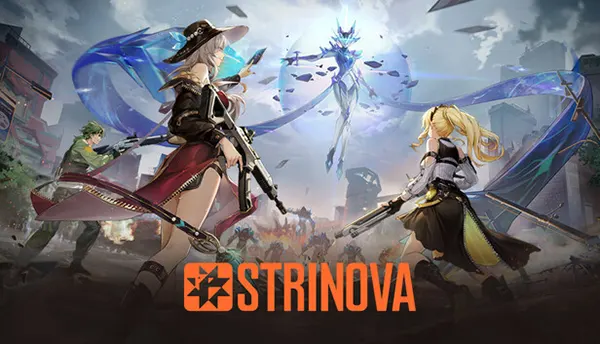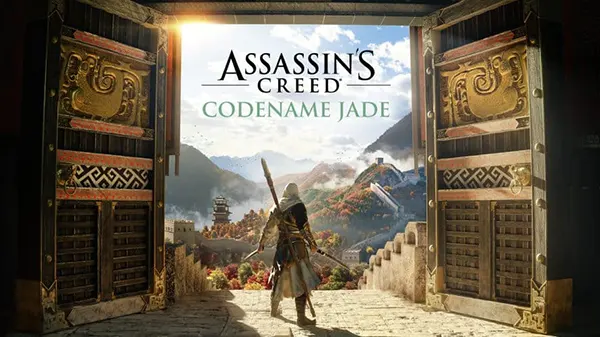
Strinova: A Tactical Anime-Style Shooter with Unique “Stringing” Mechanics
Strinova is a fresh name in the mobile gaming scene, standing out for its innovative design and mechanics. Developed by a team deeply familiar with anime culture and tactical shooters, this game introduces a unique approach through its “stringing” system—an original control mechanic that redefines movement and combat. As of February 2025, Strinova has garnered attention among mobile game enthusiasts and critics alike, not for flashy gimmicks but for its thoughtful design, strategic depth, and expressive visual style.
What Sets Strinova Apart?
Unlike most mobile shooters that rely on standard directional controls and auto-aim features, Strinova’s “stringing” system adds an entirely new layer of gameplay. This mechanic allows players to anchor their character to specific points in the environment and use strings to navigate, evade, or attack. Movement is no longer linear—it’s fluid, reactive, and dependent on spatial awareness. This transforms typical gunplay into dynamic sequences that demand tactical positioning and timing.
Another distinguishing feature is its anime-inspired aesthetic. But this isn’t mere decoration. The design serves gameplay clarity, with distinct silhouettes, readable effects, and expressive character animations. Rather than overwhelming the screen, the visuals support player focus and situational awareness. The world of Strinova is vibrant yet coherent, clearly designed with mobile hardware limitations and competitive pacing in mind.
Moreover, Strinova leans into narrative without forcing it. Players can dive into the lore through optional missions and seasonal story arcs, or simply enjoy the core gameplay loop. The writing, art direction, and sound design work together to immerse without intruding, striking a balance that many mobile titles struggle to achieve.
Technical Design and Performance
From a technical standpoint, Strinova is remarkably polished. Load times are short, controls are responsive, and the game adapts well to different device specifications. Frame rates remain stable even during graphically intense combat situations—a crucial aspect for competitive gameplay. The development team has prioritised optimisation, ensuring that the core experience is accessible without compromising visual fidelity.
Another critical success factor is server stability and netcode. Multiplayer matches, including ranked modes and co-op missions, are synchronised effectively. Hit registration and latency are kept within acceptable thresholds for most players, regardless of location. This has been achieved through a region-based server allocation model and lightweight data packets, reducing the chances of rubber-banding or unfair engagements.
Security also plays a role in Strinova’s infrastructure. Anti-cheat measures are in place from the outset, relying on both server-side validation and machine-learning-based anomaly detection. This helps maintain a fair environment and preserves the integrity of competition—a feature often overlooked in emerging mobile shooters.
Progression, Customisation and Monetisation
Strinova adopts a hybrid monetisation model. Cosmetic items, battle passes, and optional progression boosts are available, but no pay-to-win mechanics affect gameplay balance. Characters and equipment are unlocked through achievements or in-game currency earned from matches and missions. This ensures that skill, not spending, determines success on the battlefield.
Customisation in Strinova goes beyond visuals. Players can adjust weapon loadouts, skill modules, and passive traits based on their preferred playstyle. Whether you favour precision long-range attacks or rapid close-quarters mobility, there’s a viable configuration. This depth encourages experimentation and strategic planning without overwhelming new players.
Progression is rewarding yet restrained. Levelling up unlocks meaningful upgrades rather than arbitrary stats. The curve is steady, avoiding artificial grind while still offering a sense of growth. Seasonal events, limited-time missions, and rotating challenges keep the experience fresh for veterans while also helping newcomers catch up.
Community and Competitive Ecosystem
Strinova has begun nurturing an active community through official channels and supported tournaments. Weekly challenges and leaderboard incentives provide ongoing goals for competitive players, while creative events and fan art contests engage casual audiences. This two-pronged approach strengthens retention and fosters a sense of belonging among diverse player types.
Official ranked seasons are structured around clear divisions and promotion rules. Matchmaking considers not only win-loss records but also performance indicators, helping reduce smurfing and unfair matches. Anti-abuse policies are transparent and enforced, building trust among dedicated players.
Developer communication is another highlight. Patch notes, community feedback sessions, and transparent roadmaps reflect a developer team that treats its audience seriously. Bugs and balance issues are addressed promptly, and new content releases follow predictable schedules. This level of consistency is essential for sustaining engagement long-term.

Visual Identity and Audio Design
The anime aesthetic of Strinova isn’t just a stylistic choice—it’s a design philosophy that supports gameplay. Each character has a distinctive profile, allowing players to quickly identify allies and enemies. Environments are detailed yet clear, with intuitive visual cues that help navigate combat spaces. Lighting, particle effects, and animation are all tuned for clarity, not spectacle.
Audio design complements this precision. Gunshots, skill effects, and footsteps have distinct audio profiles, allowing for situational awareness even when the action is off-screen. The soundtrack blends modern electronic themes with orchestral elements, shifting dynamically based on match phases. This enhances immersion without distracting from gameplay cues.
Voice acting is used sparingly but effectively. Each character has a unique voice that matches their personality and role. Dialogues are concise, avoiding filler or overused tropes. The localisation quality across supported languages—including English, Japanese, and Spanish—is commendable, maintaining tone and intent across cultures.
Outlook for 2025 and Beyond
As of early 2025, Strinova is on a promising trajectory. With steady content updates, active community management, and a commitment to fair competition, it positions itself as more than just a niche title. Expansion into eSports circuits is already being tested, and new seasonal modes are in development, including co-op boss raids and large-scale PvP skirmishes.
Mobile shooters often face short life cycles, but Strinova shows potential for long-term success due to its modular design and active roadmap. Cross-platform functionality is under consideration, which could further broaden its audience and competitive scene. Collaborations with anime studios and voice talents are also on the horizon, deepening the connection with its cultural roots.
In a market crowded with imitators, Strinova stands out by doing fewer things better. It doesn’t try to be everything to everyone—it focuses on tight mechanics, thoughtful design, and meaningful progression. For players looking for strategic depth and visual identity in a mobile shooter, Strinova is worth watching closely.
Game Bestsellers
-
 Call of Duty: Warzone Mobile Performance Analysis Across Modern Dev...
Call of Duty: Warzone Mobile Performance Analysis Across Modern Dev...Call of Duty: Warzone Mobile has become one of the …
-
 Squid Game: Unleashed — A Mobile Battle-Royale Inspired by the Hit ...
Squid Game: Unleashed — A Mobile Battle-Royale Inspired by the Hit ...Squid Game: Unleashed is one of the most anticipated mobile …
-
 Assassin’s Creed Jade — A New Chapter in the Assassin’s Universe
Assassin’s Creed Jade — A New Chapter in the Assassin’s UniverseAssassin’s Creed Jade marks an important step for Ubisoft as …
